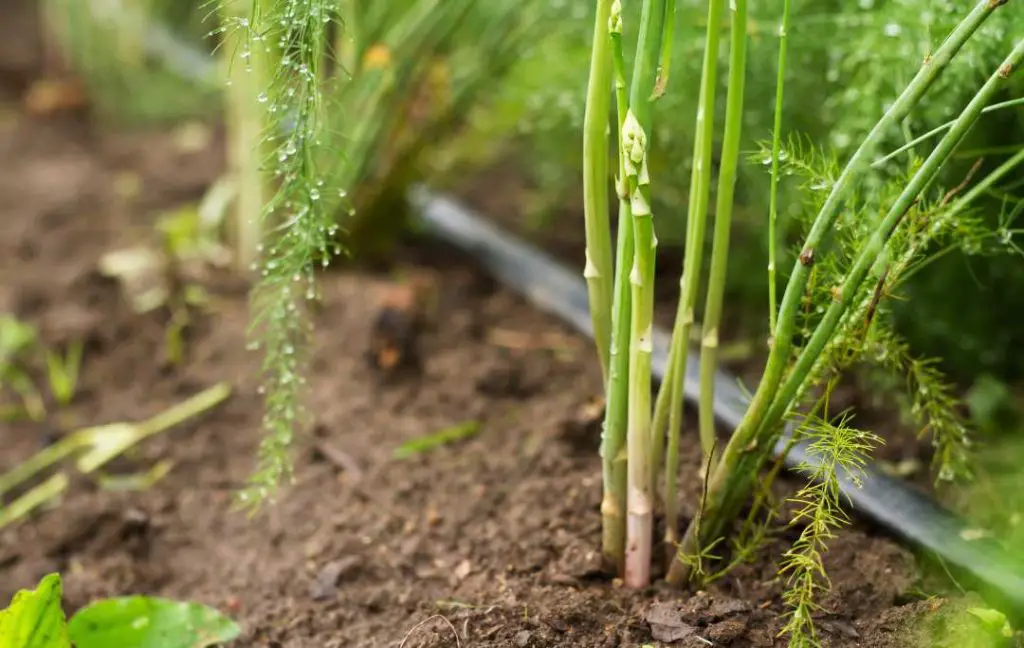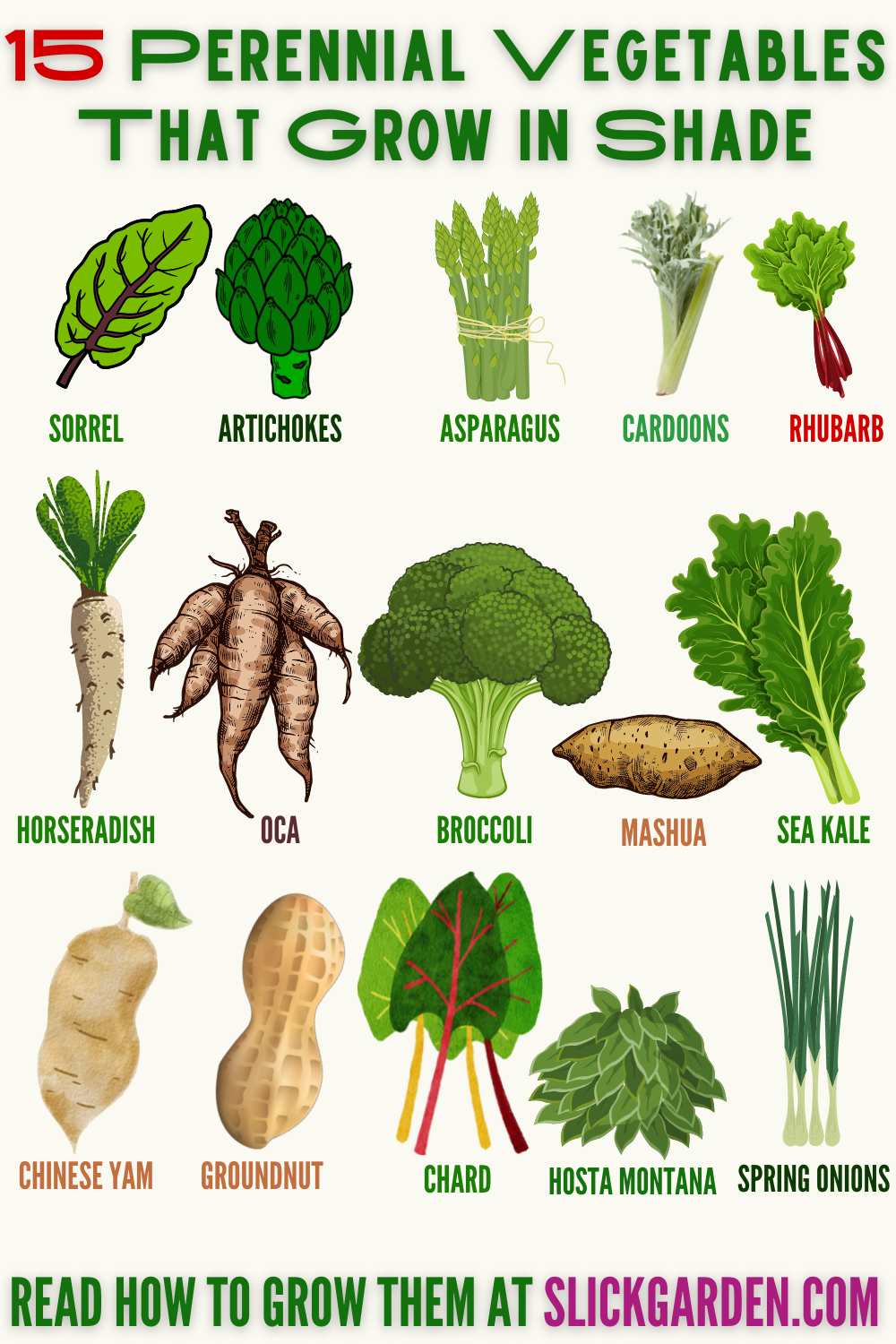Fresh vegetables are more healthy than store-bought vegetables. Perennial vegetables save you money and time. Perennial veggies are the most sustainable way of growing home-grown food.
Annuals are planted each year and biennials only live 2 years. Perennial plants are those that are planted once and harvested year after year. It means you will get tasty and nutritious fruit throughout the season.

Benefits Of Perennial Vegetables
Following are the benefits of perennial vegetables.
1- LOW MAINTENANCE
Like perennial flowers and shrubs, perennial vegetables also need little maintenance because of no annual tilling and planting. Some perennials are so good at taking care of themselves. Frequent harvesting can encourage higher yields.
Perennial vegetables produce nutritious crops throughout the season under the right condition. They are established and produced continuously. Established perennials are more resistant to diseases, pests, weeds, and drought.
2- PERENNIAL VEGETABLES EXTEND THE HARVEST
If you choose perennial vegetables then you will get more food throughout the year. Annual plants take time to transplant every year and you have to wait for the harvest.
But in the case of perennial vegetables, they are already ready to harvest.
3- PERENNIAL VEGETABLES CAN PERFORM MULTIPLE GARDEN FUNCTIONS
Adding perennial vegetables to your garden enhances the beauty of your landscape. You can use these plants as ground covers or control the erosion of slopes. They can fix the nitrogen level in the soil that’s why they are fertilized themselves.
4- PERENNIAL VEGETABLES HELP BUILD SOIL
Perennial vegetables help to improve the structure of the soil. They build soil naturally and allow plants to add more organic matter through the decomposition of leaves and roots.
Drawbacks Of Perennial Vegetables
There are some drawbacks to growing perennial vegetables.
- Perennial vegetables produce crops every year but some are very slow to establish and take several years to grow such as asparagus.
- Most people don’t like the strong flavor of some perennials.
- Some perennials can take care of themselves, that’s why they need little maintenance and quickly become weeds. They overtake your garden or raised bed and disturb the neighboring plants.
15 Perennial Vegetables That Grow In Shaded Areas

If you don’t have a sunny location for growing healthy perennial vegetables then don’t worry there are plenty of vegetables that can easily grow well in partial shade. There are 15 easy-to-grow and delicious perennial vegetables.
1- SORREL
This is a beautiful and delicious plant. Sorrel has a lemon flavor that enhances the taste of your salads or soups. This perennial plant can easily adjust from full sun to partial shade.
Before planting you can make the soil rich by adding a few inches of compost. You can grow the sorrel from seeds or buy plants from the local nursery.
French sorrel and Garden sorrel are two shade-loving types. If you choose French sorrel for planting then it is a better choice because they are less acidic.
The interesting thing about sorrel is that it just keeps growing, you have to just keep you leave and they come back again.
2- ARTICHOKES
Artichokes can easily adjust in partially shaded areas but the soil you are using must be nutrient-rich and loamy. You can improve the quality of soil by adding compost and other organic matter to it.
After planting you should maintain a frequency of water to keep the soil moist throughout the growing season. When you see the diameter of the buds is 3 inches and they are tightly packed and firmed then this is the right time for harvest.
3- ASPARAGUS
It is better to choose a sunny location for asparagus plants but they can easily tolerate dappled shade. Well-drained and more acidic soil is needed for growing asparagus.
The ideal pH of the soil must be between 6.5 to 7.5. If the soil of your garden is very poor then you can plant asparagus in raised beds because you can easily maintain the fertility of the soil according to the asparagus plants.
For growing asparagus, you need one-year-old dormant plants called crowns. The best time of planting asparagus is in March
4- CARDOONS
It is also included in those perennial vegetables that can tolerate partial shade. Well-drained and rich nutrient soil is needed for growing healthy cardoons to make your soil richer.
You can add compost or decayed manure before planting. The ideal pH for growing cardoons is 6.0 to 7.0. The best varieties of cartoons are Large Smooth Spanish, Ivory White Smooth, and Large Smooth Ones.
5- RHUBARB
Another perennial vegetable that can tolerate partial shade is rhubarb. Well-drained and fertile soil is needed for growing rhubarb. Make your soil richer by adding rotted manure, compost, and organic matter.
Avoid overwatering because this plant doesn’t like wet feet. Fall is the best time for planting rhubarb crowns.
6- HORSERADISH
You can plant horseradish in a partially shaded spot in your garden. You can also grow horseradish in pots but fill your pot or container with a high-quality potting mix that has all the essential nutrients that are needed for horseradish.
The container or pot you are using for growing horseradish must be 30 cm or 12 inches in diameter.
7- OCA
Oca plants can easily tolerate shade. If your garden has large trees then plants that are beneath the trees will get filtered light for partial shade. In that case, you have to choose those vegetables that can grow easily in shade. Well-drained soil is needed for planting oca plants.
You should not use heavy clay soil because oca plants don’t like it. If you want lush vegetative growth then you must add nitrogen to the soil.
8- PURPLE SPROUTING BROCCOLI
A sheltered site is perfect for growing purple-sprouting broccoli but make sure the location you choose for growing is not too windy. The strong winds can damage the roots of purple-sprouting broccoli.
Rich and fertile soil is needed for growing purple-sprouting broccoli. You can apply 5 to 7 inches of compost or well-rotted manure to make the soil richer before planting. The best varieties of purple sprouting broccoli are Early Purple Sprouting, Red Arrow, and Bordeaux.
9- SEA KALE
It is better to plant vegetables in partial shade rather than full shade. For healthier crops, sunlight is very important. Well-drained and fertile soil gives you a healthy crop of scale.
When you grow sea kale in containers, pots, or raised beds then you can maintain the fertility of the soil. Sea kale has glossy green large leaves with wavy edges and tiny white flowers.
Flowers attract pollinating insects because of rich nectar. You should protect sea kale plants by netting or other barriers so your plant will be protected from slugs, caterpillars, and beetles.
10- MASHUA
You should choose vegetables according to your climate. If you are living in a climate with summer temperatures then you can select mashua. Mashua can adjust in any type of soil.
The suitable pH for growing mashua is from 5.3 to 7.5. These tubers can be grown as perennial but it is difficult to manage. You can select a partially shaded area for growing water plants in a hot climate.
If you are living in a mild climate then the full sun is the best for mashua plants. You can also grow it in containers on pots. The tubers of mashua are mild and yummy. They are mostly used in making soup.
11- CHINESE YAM
Chinese yams are small bulbs like little potatoes. This aggressive vine can be planted in full sun to full shade. But it is better to plant it in partial shade so you will get healthy Chinese yam. It can adjust in any soil condition.
12- AMERICAN GROUNDNUT
American groundnut is a vining and perennial plant that can easily tolerate partial shade. I’m going out to have burgundy flowers. Besides tubers, the other edible parts of beans and young shoots.
The tubers are arranged like beaded necklaces. This vegetable needs damp to dry soil. It is better to start from old tubers rather than from seeds.
Before planting you should amend your soil by adding organic compost. After that make holes about 3 to 4 inches deep. If you lose 1 to 2 years old tubers then it will save your me. It is a vining plant so you must install a trellis to provide support.
13- CHARD
Chard is a biennial plant but can be managed as a perennial vegetable. Now I want to share with you a tip for the continuous growth of chard.
When the young leaves of chard are about 8 to 12 inches long then you should cut off the outer leaves 1 ½ to 2 inches above the ground. In this way, you will get the long growing season of chard.
Hot weather is not good for chard so you should cut the flower stalks close to the base. It will encourage the growth of new leaves. The best time for planting chard is from July to August. You will get a mature crop after 50 to 75 days.
14- HOSTA MONTANA
This is also a shade-loving perennial that comes in different sizes, patterns, and colors. This attractive perennial has bulbs that divide into clumps. The large oval leaves can easily adjust in shady spots. You can harvest this crop just like asparagus.
15- SPRING ONIONS
Spring onions can be grown as a perennial although they are annuals. If you do not harvest it in the first year they will divide and come back every year.
Full Sun to partial shade can be an ideal place for growing spring onions. In a hot climate, they grow more vigorously. But they also tolerate frost and can easily adjust in the winter.
Rich and well-drained soil are needed for growing spring onions. You can make your soil more fertile by adding organic matter. If you are growing spring onions from seed then you can sow the seeds directly to your desired location.
Regular water will encourage the germination process. You can also buy young seedlings from gardening centers and local nurseries.
